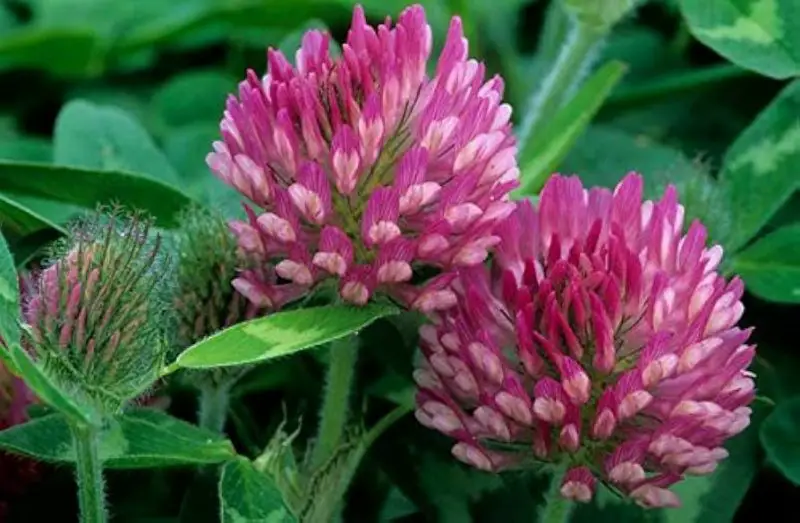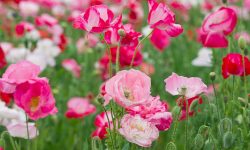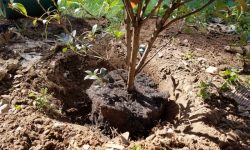Red clover is more than just a charming field flower—it is a powerhouse for soil health, pollinator attraction, and natural beauty. Many gardeners and farmers choose red clover not only for its vibrant pink blooms but also for its ability to enrich the soil with nitrogen, suppress weeds, and provide forage for livestock. However, knowing when to plant red clover is the key to ensuring lush growth and lasting success.
Timing plays a crucial role in how well your red clover establishes and thrives. Planting too early or too late can reduce germination and limit its benefits. Whether you are creating a wildflower meadow, improving pastures, or enhancing your garden’s fertility, understanding the best planting season ensures your red clover grows strong, blooms beautifully, and supports a healthy ecosystem.
Understanding Red Clover and Its Benefits

Red clover is more than just a beautiful flowering plant. It has long been valued as a cover crop and natural soil enhancer. With its deep root system, red clover helps prevent erosion, improves soil structure, and increases fertility by fixing nitrogen from the air into the soil. This unique ability makes it an ideal choice for gardeners and farmers who want to reduce synthetic fertilizer use while keeping their soil healthy and productive. Beyond agriculture, red clover carries cultural and medicinal importance, symbolizing renewal and resilience in many traditions.
One of the standout benefits of planting red clover is its role in supporting pollinators. Bees, butterflies, and other beneficial insects are highly attracted to its nectar-rich flowers. By planting it, you are not only beautifying your garden but also helping sustain biodiversity and encouraging a balanced ecosystem. A thriving pollinator population will also improve the productivity of other plants in your garden, from fruit trees to flowering ornamentals. In this way, red clover acts as a bridge between beauty and ecological purpose, making it a valuable asset in sustainable gardening.
Red clover also contributes to long-term soil improvement. When used as green manure, it can be tilled back into the ground to add organic matter. This process enhances soil texture, increases water retention, and promotes better root development for future crops. Additionally, its adaptability allows it to grow in a wide range of climates and soil conditions, making it a reliable and low-maintenance choice. Whether you are aiming to boost soil health, attract pollinators, or enrich your landscape with vibrant blooms, red clover offers benefits that extend well beyond its striking appearance.
Best Time to Plant Red Clover
Choosing the right time to plant red clover is essential if you want to maximize its growth, soil benefits, and ability to attract pollinators. Timing influences how quickly the plant establishes and how well it integrates into your garden or field. Generally, red clover thrives when temperatures are mild and soil moisture is sufficient for germination. By planting it at the right moment, you set the foundation for strong roots, healthy foliage, and vibrant flowers that will sustain pollinators throughout the season.
In many regions, spring is considered the ideal season for sowing red clover. The soil warms up, rainfall is usually adequate, and plants have enough time to establish before the summer heat. Early spring planting allows clover to compete successfully with weeds while developing a strong root system. This timing also ensures that the plant begins fixing nitrogen early, improving soil fertility for crops or companion plants that follow later in the growing cycle. Gardeners often notice healthier, more productive soil by mid-season when red clover is introduced early.
Fall planting is another excellent option, particularly in areas with milder winters. By sowing seeds in late summer or early autumn, red clover establishes roots before frost arrives, then regrows vigorously when spring returns. This method is especially useful for cover cropping, as the plant provides ground cover during winter months, preventing erosion and locking nutrients into the soil. Whether you choose spring or fall, aligning planting with your local climate ensures red clover thrives and delivers its full range of benefits.
Factors That Influence Planting Time
Climate Conditions
Climate plays a decisive role in determining the best time to plant red clover, as the plant’s development depends heavily on seasonal temperature changes. In regions with cold winters and short growing seasons, early spring planting ensures the plant establishes quickly before the heat of midsummer. This timing allows red clover to make the most of the mild temperatures and longer daylight hours that support rapid root and foliage growth. In warmer southern regions, fall planting is often more effective. The cooler conditions of autumn protect young seedlings from heat stress and give them time to anchor themselves before winter dormancy.
Beyond air temperature, soil warmth is equally critical. Red clover seeds germinate most reliably when soil temperatures range from 50 to 85 degrees Fahrenheit. If planted when the ground is still cold, seeds may sprout unevenly, and plants remain weak. Conversely, excessively hot soil conditions can damage germination altogether. Gardeners and farmers often monitor soil temperatures closely with a thermometer before sowing. By aligning planting with local seasonal transitions, you create the best conditions for red clover to thrive, ensuring strong establishment and long-term benefits for both soil and pollinators.
Soil Moisture Levels
Water availability is another essential factor that influences the ideal planting time for red clover. During germination and early growth, seedlings depend on steady soil moisture to develop strong roots. This makes early spring or late summer excellent planting periods, as natural rainfall is often more consistent at these times. When planted under favorable conditions, red clover establishes quickly, reducing the need for constant irrigation. In contrast, sowing during hot, dry months may cause seeds to dry out, resulting in weak or patchy growth. Moist soil not only improves germination rates but also helps young plants withstand initial stress.
It is also important to note that while young plants require consistent water, mature red clover is relatively drought-tolerant. Once roots penetrate deeper layers of the soil, the plant can survive short dry spells with minimal stress. Still, ensuring adequate moisture in the early stages is critical for long-term success. Farmers sometimes use light irrigation to supplement rainfall, especially in drier regions. Monitoring weather forecasts before sowing can prevent planting into soil that is too dry. When timed with periods of natural rainfall, red clover grows stronger, supports pollinators, and enriches soil health more effectively.
Regional Planting Guidelines
Planting in Northern Regions
In northern regions with long winters and shorter summers, the planting schedule for red clover needs special attention. Spring is generally the best time to sow seeds, as soil begins to warm and snowmelt provides natural moisture. Planting too late in summer can limit the plant’s ability to establish before frost returns. Early spring sowing ensures the clover grows vigorously, fixes nitrogen, and develops a strong root system during the growing season. This timing also helps red clover compete effectively with weeds that thrive in these climates.
Another option for northern areas is late summer planting, provided the first frost arrives relatively late. Sowing in August allows red clover to establish roots before going dormant in winter. When spring comes, the plant regrows quickly, offering soil protection and pollinator support. Farmers often use this method when integrating clover into crop rotations, as it prepares the soil for the following year. Whether in early spring or late summer, selecting the right moment in northern climates ensures red clover thrives despite shorter growing windows.
Planting in Southern Regions
In southern regions with hot summers and mild winters, fall planting is often the most successful. Sowing red clover in late September or October allows seedlings to establish in cooler weather without the stress of summer heat. Once rooted, the plants remain dormant or grow slowly during winter, then flourish when spring warmth arrives. This cycle not only prevents soil erosion but also enriches soil fertility early in the season. By spring, the clover is well-established, providing ground cover and food for pollinators.
Spring planting is also possible in southern climates but requires careful timing. Sowing seeds too late in spring exposes young plants to intense summer heat, which can slow growth or damage seedlings. To succeed, seeds should be planted as soon as soil temperatures rise and before hot weather sets in. Farmers often rely on early spring rains to support germination, ensuring strong establishment before summer. By timing planting to avoid heat stress, red clover becomes a resilient, soil-enhancing, and pollinator-friendly addition to southern gardens and fields.
Planting in Central Regions
Central regions, with their moderate climates and transitional weather patterns, offer more flexibility when planting red clover. Both spring and fall can work well, depending on your goals and local rainfall patterns. Spring planting is ideal for gardeners who want to maximize bloom and pollinator activity throughout the warm months. The mild temperatures and adequate moisture typical of spring help seeds germinate quickly, allowing clover to establish strong roots before the peak of summer. By midsummer, red clover is usually in full bloom, enriching the soil and supporting surrounding plants.
Fall planting also thrives in central regions, particularly when summers are hot and dry. By sowing in late summer or early autumn, red clover establishes before the first frost and then regrows vigorously in spring. This method works well for those using red clover as a cover crop or soil improver, as it provides erosion control during winter. The dual planting opportunities in central climates make red clover a versatile choice, whether your focus is soil enrichment, pollinator attraction, or simply enjoying a vibrant field of blooms.
Planting in Dry or Arid Regions
In dry or arid regions, timing is critical to ensure successful red clover growth. Because natural rainfall is limited, planting should coincide with seasonal rain events, often in early spring or late summer. Planting just before expected rains helps seeds establish without the need for excessive irrigation. In areas with unpredictable rainfall, farmers sometimes use irrigation to support germination, but aligning planting with natural moisture cycles is the most efficient strategy.
Soil conditions in arid areas often present challenges, as they may be sandy or low in nutrients. Red clover can still perform well, but early establishment is crucial for long-term survival. Fall planting, where winters are mild, allows seedlings to root deeply before facing dry summers. Once mature, red clover shows moderate drought tolerance, but the early growth stage requires consistent water. By carefully timing planting with seasonal rainfall and managing soil moisture, gardeners in dry climates can still enjoy the many benefits of red clover, from improved soil fertility to pollinator support.
How to Prepare Soil for Red Clover Planting
Preparing the soil correctly is one of the most important steps for ensuring the success of red clover. While this plant is hardy and adaptable, it thrives best in soil that offers the right balance of structure, fertility, and drainage. The first step is to clear the area of weeds, rocks, and debris that may compete with or hinder young seedlings. A clean planting bed allows red clover seeds to make direct contact with the soil, improving germination rates and early root development. This step is especially important if you are sowing clover as a cover crop or integrating it into a garden with existing plants.
Soil testing is another valuable step before planting. Red clover prefers slightly acidic to neutral soil, with a pH range of 6.0 to 7.0. If the soil is too acidic, adding lime can help balance pH and create conditions more favorable for growth. On the other hand, excessively alkaline soils may require organic matter or amendments to improve nutrient availability. Testing also reveals nutrient deficiencies, particularly phosphorus and potassium, which are important for strong root and flower development. Addressing these needs before planting sets your red clover up for long-term success.
Finally, preparing the soil surface is key to ensuring even seed distribution and good seed-to-soil contact. Light tilling or raking creates a fine seedbed where seeds can settle without being buried too deeply. Red clover seeds are small and should only be lightly covered with soil, about a quarter-inch deep. Compacting the soil gently after sowing helps improve seed contact with moisture, encouraging faster germination. With a well-prepared soil foundation, red clover will establish quickly, enrich the ground, and attract pollinators throughout the season.
Steps to Plant Red Clover Successfully
Selecting Quality Seeds
The first step toward successful red clover planting is choosing high-quality seeds. Certified seeds are always the best option, as they are tested for purity and germination rates. Poor-quality seeds may contain weeds or deliver uneven growth, which can undermine your efforts. Depending on your goal—whether it is soil enrichment, forage, or pollinator support—you can also select different clover varieties. For example, medium red clover is often used as a cover crop, while mammoth red clover is valued for its biomass production. Checking the seed label before purchase ensures you are sowing the right type for your needs.
Inoculated seeds are another excellent choice, as they come pre-treated with beneficial rhizobia bacteria. These bacteria are responsible for nitrogen fixation, one of the greatest benefits of growing red clover. If you purchase non-inoculated seeds, you can add a rhizobia inoculant before sowing to improve results. Investing in the right seeds may seem like a small step, but it has a lasting impact on how well your clover establishes and performs. By starting with quality seeds, you increase your chances of achieving vibrant blooms, healthier soil, and a thriving habitat for pollinators.
Preparing the Seedbed
Once you have your seeds, preparing the seedbed properly is essential for good germination and establishment. Begin by clearing away any weeds, rocks, or leftover debris that might interfere with young seedlings. Red clover is sensitive in its early growth stages, so competition from weeds can significantly reduce success. A weed-free bed gives seedlings the best chance to develop strong roots and healthy foliage. In areas with heavy clay soils, light tilling can improve drainage and create a finer seedbed, helping seeds make better contact with the soil surface.
After clearing, rake the soil to ensure it is smooth and level. Red clover seeds are small and require close contact with the soil for germination. Avoid creating deep furrows or uneven ground, as this may cause seeds to settle too deeply. Ideally, seeds should rest just below the surface, covered by no more than a quarter inch of soil. Pressing the soil lightly with a roller or by walking gently over the area helps ensure firm seed-to-soil contact. A properly prepared seedbed is one of the most important steps for consistent growth and long-term clover success.
Sowing the Seeds
Sowing red clover requires attention to detail, as the tiny seeds need proper placement to germinate evenly. The ideal seeding depth is very shallow, about one-quarter inch beneath the surface. Burying the seeds too deeply often results in poor germination, since seedlings may not have the strength to break through the soil. To achieve even coverage, seeds can be broadcast by hand for small garden areas or with a mechanical spreader for larger plots. Distributing them evenly helps prevent overcrowding while ensuring that the plant can grow thick enough to suppress weeds.
After spreading the seeds, lightly rake the soil surface to cover them without pushing them too deep. Firming the soil afterward, either by using a roller or simply walking over the bed, improves seed-to-soil contact, which is critical for moisture absorption and germination. Many growers also sow clover alongside small grains or grasses, which act as nurse crops to provide shade and reduce erosion while clover establishes. Timing is important: seeds should be sown when soil moisture is adequate and rainfall is expected soon. Proper sowing ensures red clover germinates quickly, spreads evenly, and develops into a healthy, pollinator-friendly cover crop.
Watering and Early Care
Watering is one of the most important steps after sowing red clover seeds, as consistent soil moisture ensures proper germination. Since the seeds are small and lie close to the surface, they dry out quickly if not watered regularly. Light, frequent watering during the first two to three weeks is ideal, keeping the soil moist but not waterlogged. Overwatering can suffocate young roots, while underwatering may result in patchy growth. Rainfall often provides enough moisture in spring or fall, but during dry periods, supplemental irrigation is necessary to help seedlings establish.
Beyond watering, early care includes monitoring weeds and protecting seedlings from competition. Because red clover seedlings are delicate, invasive weeds can easily crowd them out. A well-prepared seedbed helps reduce this issue, but it is also important to monitor growth closely during the first month. Once established, red clover develops a strong root system and grows densely enough to suppress weeds naturally. Early thinning may be necessary in crowded patches to allow for healthy growth. With proper watering and attentive care during these first critical weeks, red clover establishes quickly, ensuring long-lasting blooms, better soil fertility, and a thriving environment for pollinators.
Maintaining Growth and Health
Once red clover is established, maintaining its growth and overall health ensures the plant thrives throughout the season. One of the most effective practices is mowing or trimming at the right time. Light mowing after the first bloom encourages regrowth and extends the flowering period, providing a continuous source of nectar for pollinators. It also helps prevent the plant from becoming too woody, keeping it tender and vigorous. Avoid mowing too short, as this can weaken the root system and reduce resilience against drought or pests. Balanced management helps the clover stay lush and productive for a longer period.
Nutrient management is another important aspect of maintaining healthy red clover. While it is an excellent nitrogen fixer, the plant still benefits from adequate phosphorus and potassium in the soil. These nutrients strengthen roots and support consistent flowering. Periodic soil testing helps identify deficiencies, allowing targeted fertilization when needed. Additionally, monitoring for pests or diseases ensures that problems are addressed before they spread. By practicing thoughtful maintenance, gardeners and farmers can keep red clover in peak condition. Healthy, well-managed clover not only enhances soil fertility but also sustains pollinator activity and enriches the landscape season after season.
Caring for Red Clover Throughout the Seasons
Spring Care
Spring is the season when red clover begins its most active growth, and proper care during this stage ensures a strong start. As temperatures rise and soil warms, the plant puts energy into developing roots and producing lush foliage. Regular monitoring of soil moisture is essential, as spring rains can be unpredictable. While red clover benefits from natural rainfall, supplemental watering may be needed during dry spells to support steady growth. This is also the best time to apply any necessary soil amendments, such as phosphorus or potassium, to strengthen root development. Balanced nutrition at this stage helps prepare the plant for abundant blooms later in the season.
Weed control is another critical part of spring care. Although red clover eventually suppresses weeds with its dense growth, young seedlings are still vulnerable. Light mowing or hand weeding ensures the clover maintains an advantage over competing plants. Additionally, early spring is when pests such as aphids may appear, so regular checks help detect issues before they spread. By giving red clover attentive care in spring, gardeners and farmers set the foundation for a healthy stand that will enrich the soil and attract pollinators throughout the year.
Summer Care
Summer care for red clover focuses on managing heat stress and encouraging continued flowering. As temperatures rise, consistent moisture becomes even more important. Deep but less frequent watering helps the plant develop strong root systems capable of tolerating hot conditions. Mulching around clover stands can also help retain soil moisture and regulate temperature, reducing stress during heat waves. In regions with very hot summers, partial shade or companion planting with taller crops may provide natural protection for red clover. Keeping plants hydrated and protected ensures they continue to thrive even under challenging weather.
Another key summer task is mowing at the right intervals. Cutting back red clover after its first major bloom not only encourages regrowth but also extends the flowering season, giving pollinators a longer supply of nectar. This practice prevents the plants from becoming too woody and maintains their vigor. Summer is also the time when fungal diseases, such as powdery mildew, may appear due to high humidity. Monitoring for signs of disease and maintaining airflow around plants helps minimize risks. With consistent watering, timely mowing, and disease prevention, red clover continues to flourish and contribute to a balanced ecosystem through summer.
Fall Care
Fall is an important season for red clover, as the plant prepares for dormancy while continuing to provide benefits to soil and pollinators. During this period, clover still grows actively in mild weather, making it an ideal time for overseeding or reinforcing thin patches. Sowing new seeds in early fall allows them to establish before frost, ensuring a thicker and healthier stand the following spring. Soil moisture is usually more reliable during this season, which helps new seedlings germinate successfully. Fall care also includes mowing if the plants have grown tall, keeping them at a manageable height and encouraging denser regrowth.
Another valuable fall practice is using red clover as a cover crop. Its roots stabilize soil, while the foliage prevents erosion from autumn rains. As the plant fixes nitrogen, it enriches the soil for the next planting season. Fall is also a good time to check for lingering pests or diseases, as addressing them before winter reduces risks in spring. By focusing on reinforcement, soil protection, and pest management, fall care helps red clover remain resilient through the colder months while continuing to support pollinators until frost arrives.
Winter Care
Winter care for red clover depends largely on regional climate, but the goal is always to protect the plant so it regrows strongly in spring. In colder regions, red clover enters dormancy and stops growing once temperatures drop significantly. During this period, the dense foliage and root system continue to protect soil from erosion and nutrient loss. Avoid heavy foot traffic or machinery on the clover stand in winter, as compacted or damaged soil can hinder spring regrowth. A light mulch layer may also help insulate plants in extremely cold conditions, reducing the risk of winterkill.
In regions with mild winters, red clover may continue to grow slowly throughout the season. Occasional mowing may be needed if growth is excessive, but generally, winter is a time to let the plant rest. Supplemental irrigation is rarely necessary, as rainfall usually provides enough moisture. The key task is monitoring the field to ensure no bare patches develop, which could invite erosion or weed invasion. With proper winter care, red clover emerges in spring strong and ready to support pollinators, improve soil fertility, and provide lush green growth once again.
Benefits of Planting Red Clover
Improving Soil Fertility
One of the most valuable benefits of planting red clover is its ability to improve soil fertility naturally. Red clover belongs to the legume family, meaning it forms a symbiotic relationship with rhizobia bacteria in its root nodules. These bacteria capture nitrogen from the atmosphere and convert it into a form plants can use. As a result, red clover enriches the soil with nitrogen, reducing the need for synthetic fertilizers. This process not only benefits the clover itself but also enhances the growth of future crops or companion plants grown in the same soil. Over time, repeated planting of red clover leads to healthier, more productive soil.
In addition to nitrogen fixation, red clover also contributes organic matter to the soil. When mowed or when its roots decompose, it adds valuable biomass that improves soil structure and water retention. This organic material enhances microbial activity, creating a balanced ecosystem within the soil. Improved soil structure makes the ground easier to work with while supporting healthier root growth for future plantings. By using red clover as a natural soil enhancer, gardeners and farmers can reduce dependency on chemicals, promote sustainability, and enjoy the long-term rewards of fertile, living soil.
Attracting Pollinators
Red clover is widely celebrated for its ability to attract pollinators, making it a powerful ally in creating thriving ecosystems. Its vibrant pink to purple blooms are rich in nectar, which draws bees, butterflies, and other beneficial insects. These pollinators play a crucial role not only in sustaining red clover itself but also in supporting the productivity of nearby flowering plants, fruit trees, and vegetable crops. By planting red clover, you effectively create a natural feeding ground for pollinators, ensuring their populations remain healthy and active in your garden or field.
Beyond its direct impact, red clover also supports biodiversity by encouraging pollinator presence throughout the growing season. When managed properly, its extended flowering period provides a reliable food source during times when other plants may not be blooming. This steady availability strengthens pollinator communities, which in turn benefits the entire environment. Farmers often use red clover fields to support honeybee colonies and increase crop yields. By attracting and sustaining pollinators, red clover plays an essential role in both natural and agricultural landscapes, creating a more balanced and resilient ecosystem.
Preventing Soil Erosion
Red clover is an excellent plant for preventing soil erosion, thanks to its dense root system and ground-covering growth habit. Its fibrous roots spread widely through the soil, holding particles together and minimizing the risk of erosion caused by wind or water. This makes red clover especially valuable on slopes, embankments, and areas prone to runoff, where soil loss can quickly become a serious issue. By acting as a living barrier, red clover helps keep topsoil intact, preserving the nutrient-rich layer that supports healthy plant growth.
In addition to stabilizing the soil, red clover’s leafy canopy reduces the direct impact of raindrops on the ground. This protective cover slows down water movement, allowing more moisture to be absorbed rather than washing away soil particles. Over time, areas planted with red clover develop stronger soil structure, improved moisture retention, and increased resilience against environmental stresses. Farmers and gardeners often integrate red clover into crop rotations or cover cropping systems to protect their land between growing seasons. This dual role—enhancing soil fertility and preventing erosion—makes red clover a truly sustainable choice for long-term soil health and agricultural success.
Supporting Wildlife Habitat
Red clover is more than just a cover crop; it plays an important role in supporting wildlife habitat. Its bright, nectar-rich flowers attract a wide variety of pollinators, including bees, butterflies, and other beneficial insects that are essential for healthy ecosystems. By providing a reliable food source throughout the blooming season, red clover helps sustain these pollinator populations, which in turn support the reproduction of many other plants in gardens, meadows, and natural landscapes. This interconnected cycle makes red clover a cornerstone species in areas where biodiversity is valued.
Beyond insects, red clover also provides benefits to larger wildlife. Its lush foliage serves as forage for animals such as rabbits, deer, and livestock, offering a protein-rich food option during the growing season. Birds may also use clover fields for nesting cover or forage for seeds once the plant matures. By fostering a diverse habitat, red clover encourages ecological balance and strengthens local food webs. Whether grown in small gardens or across large agricultural fields, red clover contributes significantly to wildlife support while enhancing the overall health of the environment.
FAQ About Planting Red Clover
What is red clover commonly used for?
Red clover is widely used as a cover crop to improve soil fertility, prevent erosion, and support pollinators. It also serves as forage for livestock due to its high protein content. Additionally, red clover is valued for its medicinal properties, making it useful in teas, extracts, and herbal remedies.
When is the best time to plant red clover?
The best time to plant red clover depends on climate, but it generally thrives when sown in early spring or late summer. Planting during these periods ensures optimal soil temperatures and moisture levels, helping seeds germinate successfully and establishing a strong root system for lasting growth.
Does red clover require a lot of maintenance?
Red clover is relatively low-maintenance once established. It requires well-drained soil and moderate moisture, with occasional mowing to encourage regrowth. While it fixes its own nitrogen, supplemental phosphorus and potassium may help. Regular monitoring for pests or diseases ensures healthier plants and extended blooming throughout the growing season.
How long does red clover live?
Red clover is generally considered a short-lived perennial or biennial, typically lasting two to three years. However, with proper management and reseeding, it can persist much longer in fields and gardens. Its ability to self-seed naturally also helps maintain its presence across multiple growing seasons.
Is red clover safe for human consumption?
Red clover is often consumed in teas, tinctures, and supplements, but it should be used with care. While it contains beneficial compounds like isoflavones, excessive intake may affect hormone balance. Pregnant women or those on blood-thinning medication should consult a healthcare professional before using red clover products.
Conclusion
Red clover is far more than a simple cover crop; it is a resilient, versatile plant that benefits soil, wildlife, and human well-being. From improving soil fertility and preventing erosion to supporting pollinators and providing natural beauty, red clover proves its value in every garden or farm. Planting and maintaining it with seasonal care ensures long-lasting results and sustainable growth. Whether you are a gardener seeking vibrant blooms, a farmer improving soil health, or someone interested in its herbal uses, red clover offers endless rewards. By understanding when to plant and how to care for it, you can enjoy its beauty and benefits for years to come.






